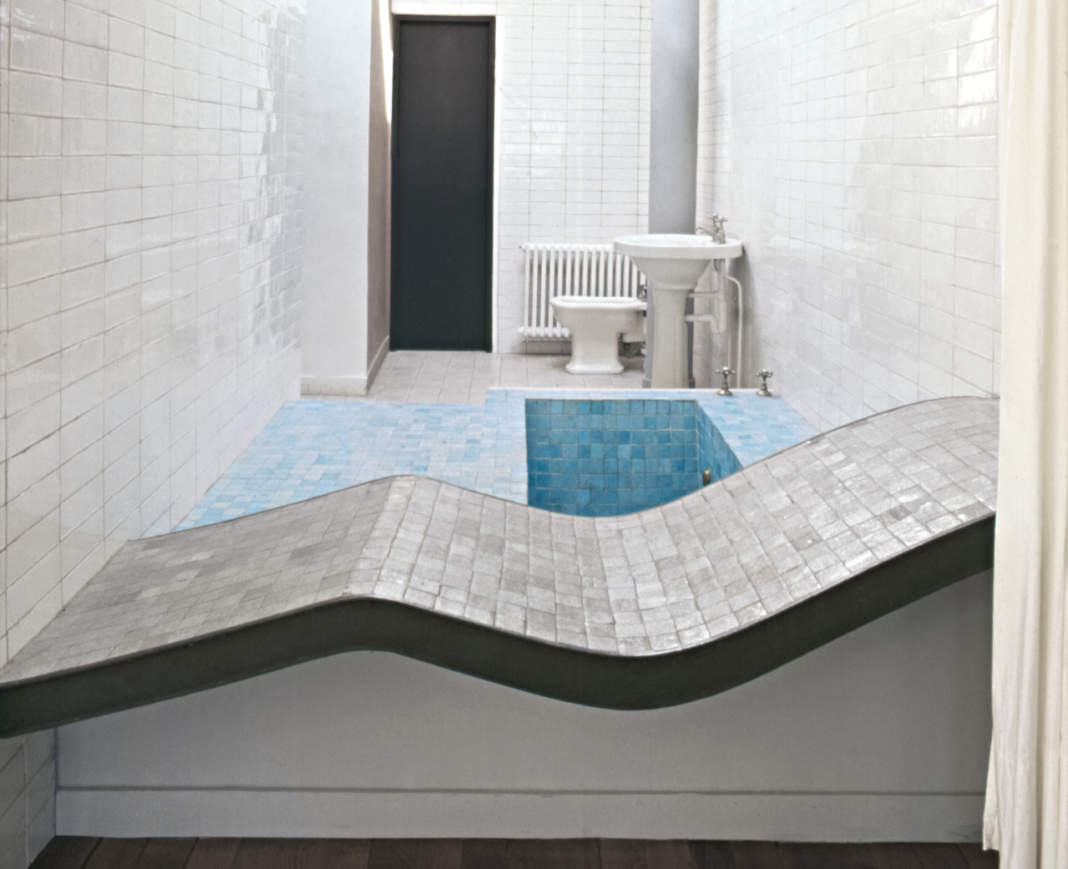As introduction of the theme of places dedicated to caring for the body and hygiene and the items installed in them, it may be useful to mention two emblematic cases – an object and a space – which serve to understand the real sense, as well as the functional indispensability, of these environments. The former, the object, is Marcel Duchamp’s Fountain, the ready-made created in 1917 from an overturned urinal; the latter is an interior, and more precisely the bathroom in the master bedroom of Ville Savoye, designed by Le Corbusier in 1928.
These two examples both represent, in their respective genres, interpretations of the form and language of the space and function which has explicated and altered, directly or indirectly, the way we understand both the instruments and the devices necessary for the activities characterizing these places and the meaning of such a private environment, and thus the way in which it may be articulated; or in other words how it relates to other spaces.
The urinal, as the French artist has provokingly presented as “fountain” is striking in that its form, recognized to anyone, indelibly remains linked to its more prosaic purpose even if it has been turned upside down.
In fact, the bathroom is a place in an architectural interior – in the same way as the kitchen in the home and the operating theatre in a hospital – which is strongly conditioned by its use, which requires a high performance and specific devices; and the latter, even if removed from its context, if used to represent something else, continue to evoke their original function. Their form, which is the result of technical and practical necessities, is language as such, an expression which has become symbolic of the function.
It is a matter of a function which Le Corbusier reinterprets in his project, where the bathroom is no longer a defined, closed environment which is distinguished from the rest of the home, but is decomposed in functional sub-environments, each with its level of privacy and thus of sharing of living with those using the same spaces. In fact, the master bathroom of Ville Savoy only relegates the most intimate functional part to a closed environment, while the washbasin, the tub and the famous chaise longue in tiles next to the double bed are placed in full view, by the entrance to the room. The single actions which take place in the bathroom are separated; the function is reinterpreted in moments characterized by different levels of intimacy, the fixtures are displayed like precious icons of modernity, deprived of decorations that distract the attention from their functional aspects. Indeed, precisely the symbolic significance of these functions, otherwise considered merely as technological instruments, become a means of asserting the absoluteness and purity of modernism and its lack of linguistic superstructures.
In fact, another washbasin is featured on the ground floor of the villa, by the entrance, in the passage connecting the garage with the entrance ramp, as if on display, overturning every criterion of decorum and decency, to stress the need of cleaning before entering the house after a trip in a luxurious Citroën Type C or, subsequently, an innovative Traction Avant.
With respect to the contemporary scenario, both with regard to places for physical wellness and the design of bathroom fixtures, the two examples serve to return to the significance these environments and their components may express, in addition to merely meet practical requirements. The current situation is characterized by a tendency to design items for the bathroom that are less and less recognizable as such; sophisticated objects which almost “incidentally” succeed in performing their primary functions while pursuing completely new languages, materials and morphologies in a continuous attempt to liberate themselves from the original image known to everyone. Not only, a certain minimalism sustained by technique even suggests the cancellation of the details and supports which are usually found in such areas, with the result that the objects are almost free from physical substance. However, this research carried to the extreme limits, aimed at cancelling the stereotyped image of the bathroom through the design of its parts, is counterbalanced by an increasingly traditional bathroom design; while sometimes very transparent, this approach in other cases feature a shared use of the space or an original localization of the items which is, in any case, very different from the revolutionary solutions characterizing the early years of the Modern Movement. We once more find “rooms”, closed and limited environments; expression of principles that are principally inferred from codified life schemes promoted by the media and by banal cultural clichés. A reflection on what body care, the pursuit of physical wellness and personal hygiene must represent in our society – in short, intimacy and participation – should lead, also referring to items that are what they appear to be, to provisions capable of suggesting modalities of behaviour, as well as relations, that are immersed in our time and that harmonize with the choice of lifestyles and the current – changeable – culture of living.
A shared intimacy
area 136
| elements
| bathroom




